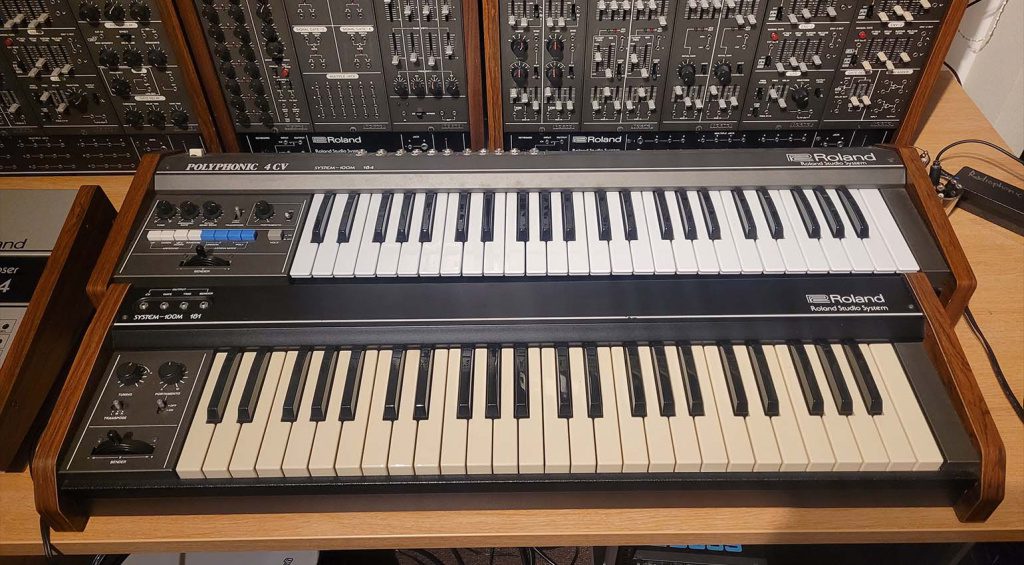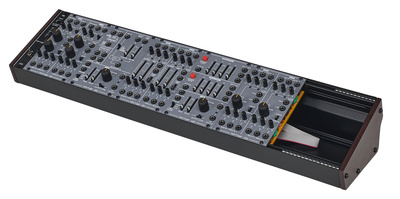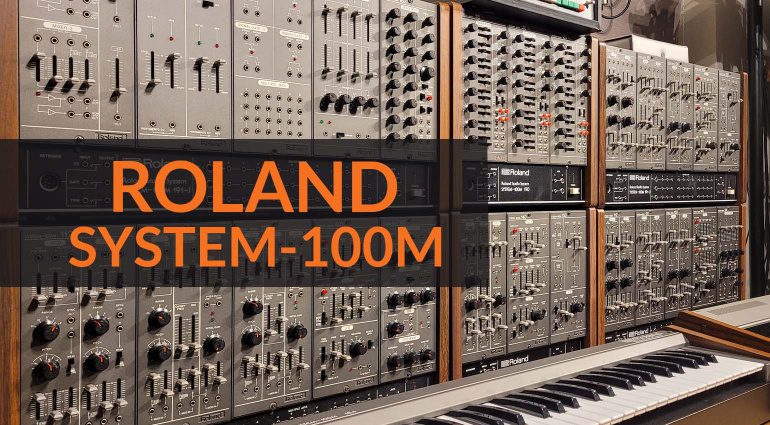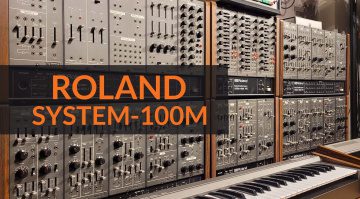Classic Gear: Roland System-100M – Roland’s Finest Hour
Roland’s second modular synthesizer was flexible, powerful and sounded incredible.
The Roland System 100M remains a high-water mark for both the company and analogue synthesizers in general. And yet its success was far from guaranteed. Read on to find out why.
Roland System-100M
If asked to name some modular synthesizer systems, you’d probably first come up with Eurorack, followed by Moog, Buchla and maybe Serge if you’re a real nerd. There are more, of course, including two from Japanese powerhouse Roland, the System-700 and System-100M. The former, the System-700, was prohibitively expensive. The latter, however, was not, and the System-100M served as an introduction to modular analogue synthesis for many not only in Japan but around the world.

Now regarded as one of the best synthesizers ever made, the System-100M has been used by Jack Dangers of Meat Beat Manifesto, synthesist Ian Boddy, Chris Carter of Throbbing Gristle, Hans Zimmer and, more recently, Alex Ball.
“It was incredibly well planned out,” Alex told me when I asked him for a quote on the instrument, “comprehensive, easy to use, relatively affordable, reliable and above all, it sounded great.”
Let’s get into what made the System-100M so special.
A Mono Among Polys
Roland first started rolling out the System-100M in 1978, releasing new modules, cabinets and keyboard controllers through 1983 when it ended production. Those five years saw the rise of polyphonic synthesizers, both analogue and digital. How was Roland able to keep sales going on not only a monophonic synth – which everyone said was basically dead at the time – but a modular monophonic to boot?
Alex offers this opinion: “Whilst, in some ways, it was an ageing paradigm, being that it was sold alongside memory-endowed polyphonic synthesizers, early samplers and FM machines, the Roland System-100M actually benefited from being one of the latter modular systems of the initial analogue era because many lessons had been learned and the technology had been through much trial and error.”
I would also suggest that, at least in Japan, the monophonic synth boom of the late 1970s helped. Their wallets bulging thanks to a gangbusters economy, Japanese electronics fans took to monophonic synths in a big way. This is when musical instrument manufacturers had their own showrooms in Tokyo, and even Technics made a synth, the SY-1010. Much like the Eurorack boom today, not just musicians but general hobbyists got into synths. The System-100M likely benefitted from this at home.
The Modules, Keyboards and Cabinets
Roland released 13 modules, three keyboard controllers and two racks over the course of the product run of the System-100M. You could buy them individually or as sets, of which there were five (labelled A to E), each including a cabinet and keyboard as well. Modules included the usual suspects like VCOs, VCFs and VCAs plus a complete single voice unit, as well as utilities and effects plus a sequencer.
I don’t have enough space here to get into every module released (and there are plenty of other sites that already do that) but I will explain the most common rig that you’re likely to come across, the D Set.
The D Set included five modules. These were the dual VCO 112, dual VCF 121, double VCA 130, two envelope and single LFO 140 and the 150, which featured a ring mod, noise generator, sample and hold and single LFO. Holding it all together was the 191-J cabinet, which had a generous selection of mult jacks (nine sets, each with three minis and one phono port). Finally, there was the included 181 keyboard controller, a 49-key monophonic keyboard.

Interestingly, Roland introduced a polyphonic keyboard in 1983. Essentially the keyboard from the Jupiter-4 and outputting four CVs and gates, it allowed for four-voice polyphonic playing – provided you had enough modules!
An Amazing Gift
My System-100M came to me in a surprising way. My wife works at a long-running drama theatre in Japan. One of her co-workers was in charge of creating sound and music for the performances back in the 1970s. To do this, he used a combination of System-100 (models 101 and 102) and a System-100M, along with a CSQ-600 sequencer and RE-301 Chorus Echo tape delay unit. Rather than have them languish on the shelf in the storage area behind the theatre, he gave them all to me.

He bought his System-100M module by module rather than as a set and used them together with the System-100. This is why there’s no 150 in his cab. As the Model 102 in the System 100 already has ring mod and S&H, it wasn’t necessary to buy it. I imagine there were a number of people using the two systems together in this way. After all, the naming convention implies some carry-over between the two.
The System-100M In Sound And Use
However, the sound of the 100M is very different than the 100. Whereas the 100 is fat and beefy, almost American in its sonic girth, the 100M has a more stereotypically ‘Roland’ feel, with robust but clean oscillators and a sweet and musical filter. The two synth systems are without a doubt the best-sounding ones in my collection. Despite the 100M’s lack of fatness, it is still impressively full and powerful.
The 100M was my first encounter with a fully modular synthesizer. However, it’s easy enough to get your head around, thanks in part to its unusual semi-normalled internal CV/gate bus system. Having all the mults on the 191-J is extremely convenient as well.
I have it set up next the System 100 as well as a Korg MS-20 Mini for cross-patching fun. And, to flesh things out, I added the Behringer 150 and 172 modules (the latter a delay and phase shifter unit) just for fun. Someday I’d like to fill that empty space in the cab, ideally with a sequencer.
Get Your Own System-100M
While it’s not uncommon to find a System-100M D Set for sale, some of the more esoteric modules are indeed pretty rare. If you’re curious about the sound but don’t want to lay out the cash, your best bet is Behringer. Ron Keeble of AMSynths (who did their own Eurorack System-100M clone) worked with Behringer on the (confusingly named) System 100, which offers a recreation of the system in standard Eurorack format.
Another Eurorack remake came from Roland working with Malekko Heavy Industry. This was the System-500, which took inspiration from the 100M, 700, 100 and SH-5.
A few manufacturers are also creating new modules in the original 100M format, such as Ryk Modular and E-licktronic.
Thank you to Alex Ball for the help and pictures.


More Information
- All about Roland
- All about synthesizers
- All about modular
One response to “Classic Gear: Roland System-100M – Roland’s Finest Hour ”

 4,7 / 5,0 |
4,7 / 5,0 | 









Nice!
I have and use a full system 100 , and had a 3 cab 100m 191j with the 184 keyboard years ago. Whenever i tried to use them together, the 100m would be overshadowed due to the girth (as you put it) and power of the 100s two oscillators. I’d always have to turn down the 100 at the desk, even though the 100m had about 6 oscillators.
Eventually i sold the 100m piecemeal.